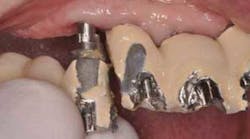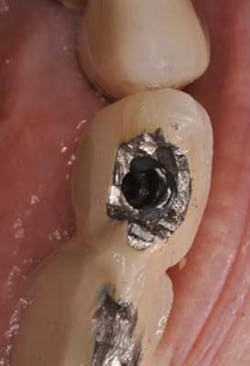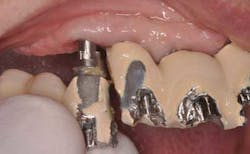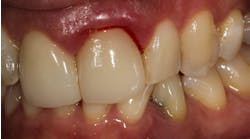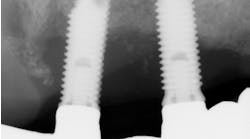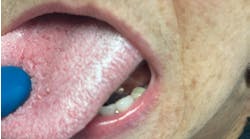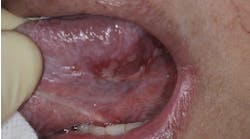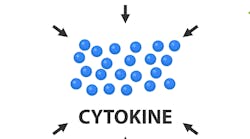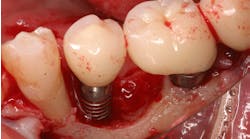For the love of everything holy, don't use permanent cement for implants
Whether you prefer screw-retention or cement retention, I think we can all agree that the ability to retrieve the restoration is very important. If there is a fracture of restorative material, such as porcelain or acrylic, then it’s nice to be able to remove the thing and have the lab fix it. I would also urge you to consider how certain contours of the prosthesis can hinder hygienic access, so periodically removing some restorations can significantly aid peri-implant maintenance procedures.
ALSO BY DR. CHRIS SALIERNO | The flipper dilemma: keeping patients out of the worst provisional option
So if you’re a screw-retained kind of guy or gal, then we don’t really have to worry about retrievability. But if you’re more on the cement-retention side of the debate, then I urge you to seriously consider what you use as a luting agent. Here’s my personal list of what I use, in order of my favorite to least favorite:
- An implant cement, such as Premier Implant Cement (Premier) or Telio CS Cem implant (Ivoclar). These are radiopaque, which is important for spotting any subgingival excess.
- A traditional temporary cement. This may be too weak, but it will definitely be retrievable.
- Polycarboxylate cement (Durelon, 3M ESPE) mixed with Vaseline.
And that’s it. I would never, ever recommend using any permanent cement for an implant restoration. The only reason I can think of why some dentists may use a permanent cement is if the implant crown keeps exfoliating after using the above cements. But this should tell us that there is some other problem here. Check the occlusion, check the axial height of the abutment, check everything but pretty please DO NOT use a permanent cement. Whatever forces are causing the crown to loosen are still at play. Now those forces are going to be channeled elsewhere along the implant, such as the abutment screw, the implant itself, and so on.
If you’re ever had to drill through an implant restoration looking for the access hole, you know true pain. You will break a sweat trying not to actually prep the head of the abutment screw, or worse, prep the platform of the implant. So let’s all make a pact together: no more permanent cement for implant restorations. It may answer your problems today, but it will create bigger problems for you or another one of us tomorrow.
ALSO BY DR. CHRIS SALIERNO |The wrong way to restore an implant
